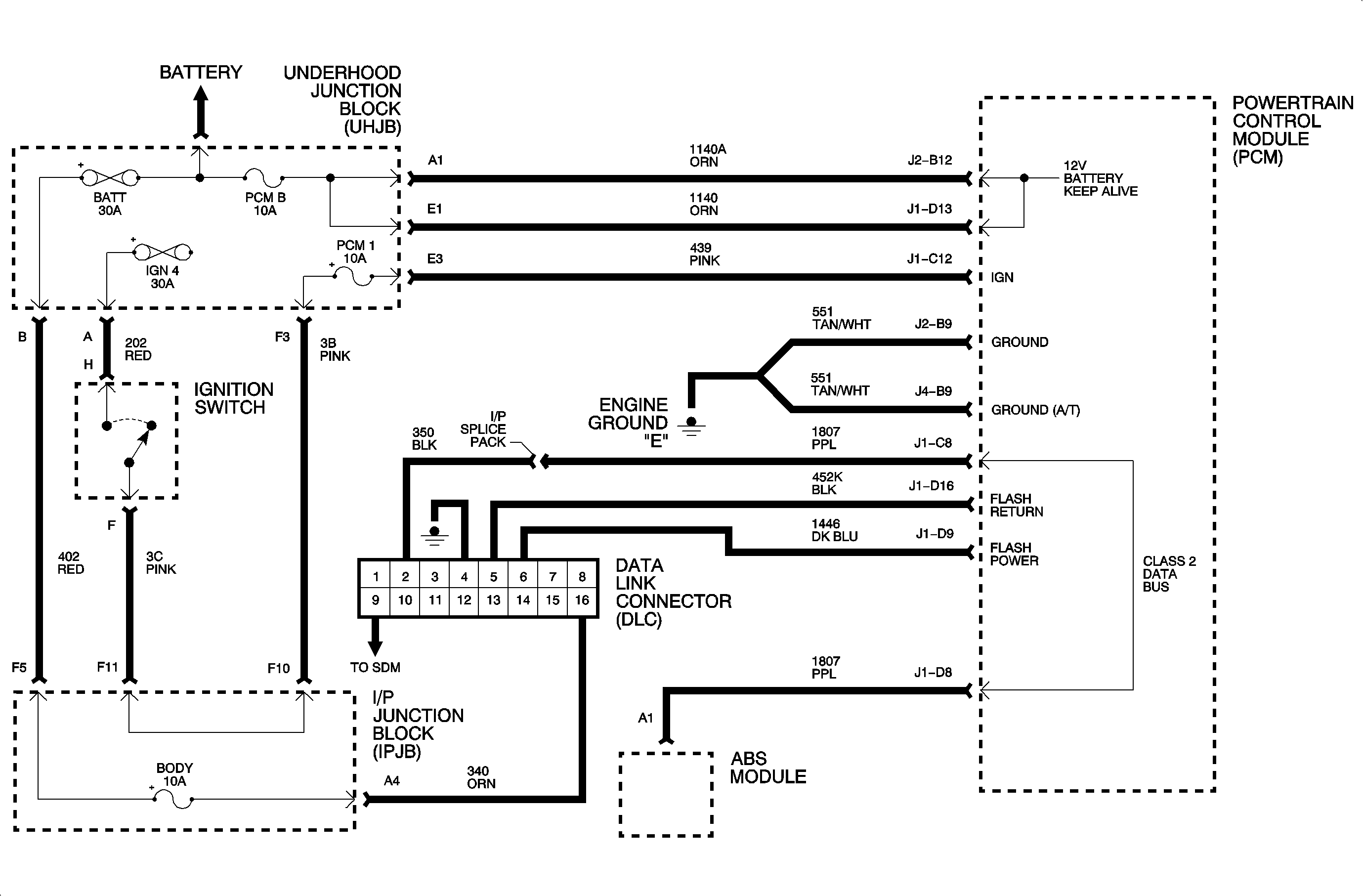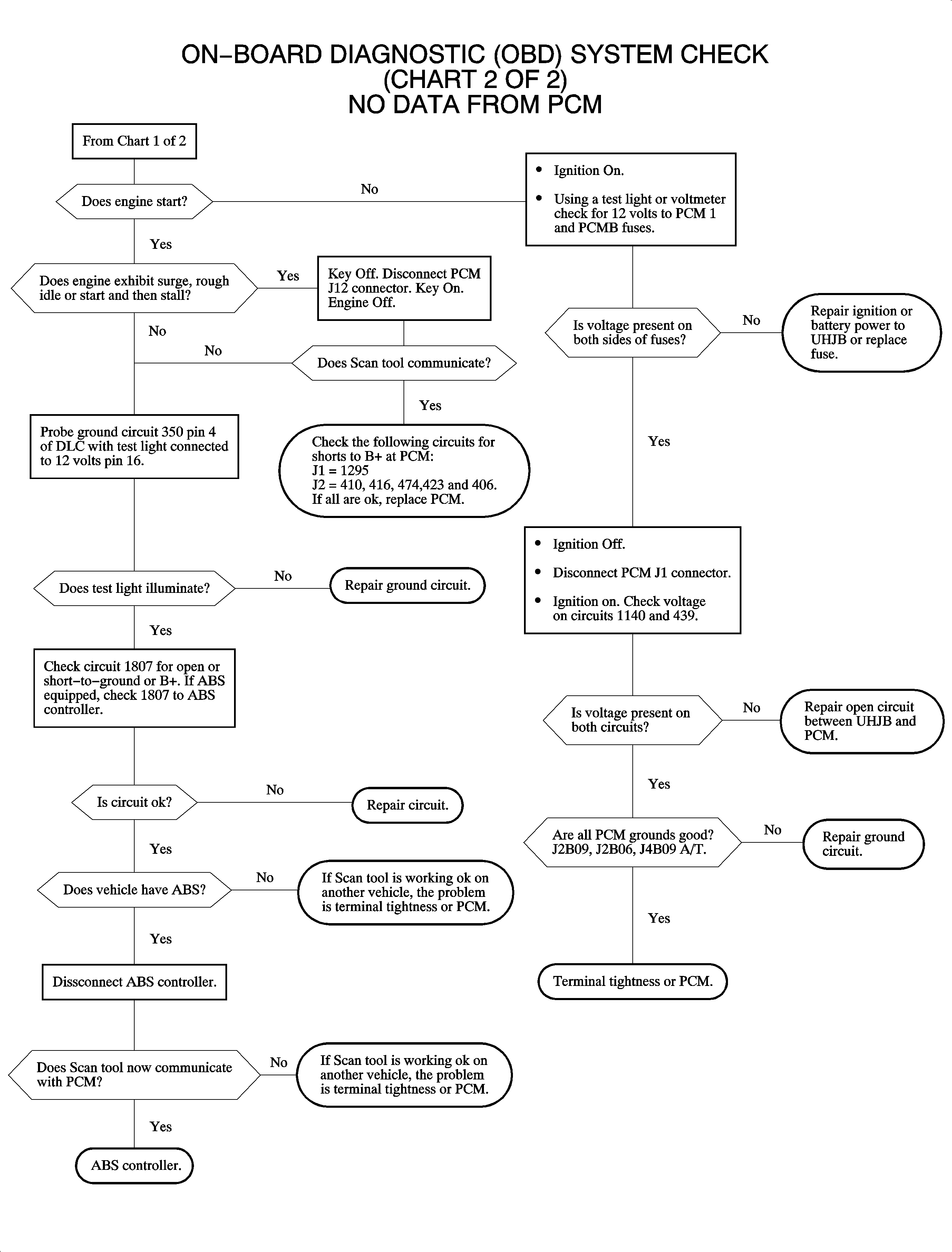Diagnostic System Check - Engine Controls Chart 1 of 2
OBD System Check

Since a scan tool is required to perform any diagnostic, this is the starting point. The PCM and the ABS, if equipped, share the same data link, referred to as the class II data bus. The air bag system uses its own data link, which is not connected to the class II data bus.
When the ignition is turned ON, the PCM will perform a bulb test on the service lamp, the low coolant/hot telltale lamp and the MIL, service engine soon, telltale lamp. The lamps should stay ON 2-3 seconds after the engine is started and turned OFF. If any of the lamps remain ON, a problem and possible DTC will exist.
If data can be read, the engine starts and runs OK, and there are no DTCs stored, then diagnosis will depend on the symptoms or customer complaint.
Circuit 1140, battery keep alive, has 12 volts applied to it at all times. Information such as diagnostic trouble codes, long term fuel correction, spark adaptives, etc., requires power to retain their learned values.
Circuit 551, ground, is grounded to the engine at the top front bell housing stud.
Flash power and flash return are used when reprogramming the PCM.
Refer to PCM/Serial Data section of this manual for more information.

Diagnostic System Check - Engine Controls Chart 2 of 2
OBD System Check

If a scan tool can not communicate with the PCM, chart 2 of 2 will isolate the cause. If the engine starts and runs OK, it indicates the PCM is functional and the problem is in the serial data link.
A problem with loss of power to the PCM or faulty ground circuits will be indicated by the loss of serial data as well as no PCM controlled lamps being illuminated when the ignition is turned ON.
Important: Class II communications are terminated by the PCM when ignition voltage is too high, approximately 16 volts. Verify a battery charger or system voltage is not causing lack of communications.
Important: A short to B+ in the 5 volt reference circuit shared by the MAP, TPS, EGR, ECT, fuel tank pressure sensor, and IC circuits will result in loss of PDT communication and driveability concerns, e.g. engine surge and rough idle, stall, or crank no-start.
The class II data bus is used by the PCM as well as ABS, if equipped. The scan tool communicates to both controllers through pin 2 of the DLC connector. The scan tool also uses pin 4, circuit 350, of the DLC as a ground reference when reading serial data. The class II data bus is normally around 0.5 volts and is switched high, 7 volts, to low when communications are taking place.

